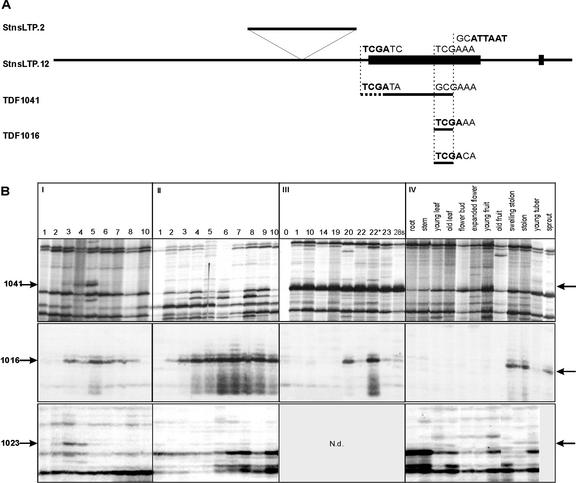Figure 1.
Expression pattern and relative location of three potato TDFs corresponding to potato nsLTP genes: TDFs 1016, 1023, and 1041. A, The location of the three TDFs is shown relative to the StnsLTP.2/12 clones. The sequences indicated above the TDFs show the nucleotide sequence variations in and around the TaqI site (bold), giving rise to the different amplification products in the cDNA-AFLP fingerprint in comparison with the sequences found in the genomic clones. The AseI site (bold), present in all cases, is shown above the genomic clones. The dotted line in TDF1041 denotes a region of reduced sequence homology to the genomic sequences. In the genomic clone StnsLTP.2, an insertion of 331 bp is positioned above the common sequence. The exons of the StnsLTP genes are indicated by black blocks. B, I, (8% [w/v] Suc) Ten separate time points of tuber development (days) based on templates isolated from in vitro explants grown under tuber inducing conditions. The arrows indicate the location of the respective TDF; II, (8% [w/v] Suc + gibberellin [GA]) The same developmental period as in I, however, GA was added to the growth medium, suppressing tuber formation; III, Dormancy and sprouting, and the numbers refer to time points in weeks after harvest. The difference between the samples taken at weeks 22 and 22* is that the latter was harvested from a batch that had started sprouting for 1 to 2 weeks, whereas sample 22 had no sprouts at all. IV, RNA fingerprints generated from different potato plant tissues as indicated.

